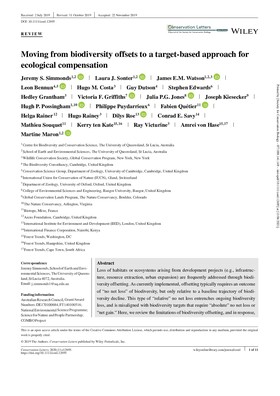Moving from biodiversity offsets to a target-based approach for ecological compensation

Loss of habitats or ecosystems arising from development projects (e.g., infrastructure, resource extraction, urban expansion) are frequently addressed through biodiversity offsetting. As currently implemented, offsetting typically requires an outcome of “no net loss” of biodiversity, but only relative to a baseline trajectory of biodiversity decline. This type of “relative” no net loss entrenches ongoing biodiversity loss, and is misaligned with biodiversity targets that require “absolute” no net loss or “net gain.”
Here, we review the limitations of biodiversity offsetting, and in response, propose a new framework for compensating for biodiversity losses from development in a way that is aligned explicitly with jurisdictional biodiversity targets. In the framework, targets for particular biodiversity features are achieved via one of three pathways: Net Gain, No Net Loss, or (rarely) Managed Net Loss. We outline how to set the type (“Maintenance” or “Improvement”) and amount of ecological compensation that is appropriate for proportionately contributing to the achievement of different targets.
This framework advances ecological compensation beyond a reactive, ad‐hoc response, to ensuring alignment between actions addressing residual biodiversity losses and achievement of overarching targets for biodiversity conservation.



